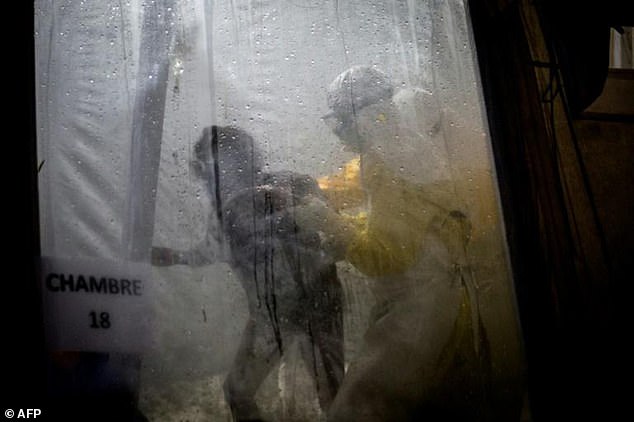Tag: CDC
Suicide rates for children, young people jumped between 2007 to 2017: CDC

The suicide rate among those between ages 10 to 24 jumped between 2007 and 2017, according to a report released by the Centers for Disease Control and Prevention (CDC) on Thursday.
The 56-percent jump in that decade contrasted with a more stable suicide rate among the age group previously. In 2007, there were 6.8 suicides per 100,000 people among ages 10 to 24, while in 2017 there were 10.6 suicides, according to the CDC.ADVERTISEMENT
Suicide is the second leading cause of death among people in that age range, behind accidents, according to The Washington Post. The suicide rate was higher than the homicide rate in that age group starting in 2011.
When broken down by age groups, the suicide rate for those aged 10 to 14 almost tripled between 2007 and 2017. For teenagers 15 to 19, the rate surged 76 percent in that decade.
For 20- to 24-year-olds, the rate of suicides has been increasing from 2000 to 2017, at a rate of 36 percent.
The Post noted researchers do not know the reason for the spike in the suicide rate among teens and young people, though they saw it as cause for alarm.
“Just looking at these numbers, it’s hard not to find them completely disturbing. It should be a call to action,” Lisa Horowitz, a pediatric psychologist at the National Institute of Mental Health, told the Post.
Article via TheHill
(RIP) Etika’s mother defends KEEMSTAR amid accusations he contributed to her son’s death #fullbreakdown
Mari & Mercedes C0mm!tt Su!c!de Days Apart~ social media is calling them 2017 Romeo & Juliet
CDC warns of crypto parasite in pools, water parks
A new report from the CDC shows outbreaks of an illness caused by a parasite in swimming pools are on the rise.
Women ‘are forced to have sex in return for Ebola jabs’ in the Democratic Republic of the Congo as death toll from latest outbreak passes 500
Article via DailyMail
- Latest Ebola outbreak in Democratic Republic of the Congo has killed over 500
- Officials said a vaccination programme has prevented thousands more deaths
- There are claims that some individuals have been demanding sexual favours in return for treatment for the deadly disease
Women are being forced to have sex in return for Ebola vaccinations in the Democratic Republic of the Congo, it has been claimed.
Fears of exploitation by frontline workers in the fight against the deadly disease were also highlighted as the death toll from the latest outbreak in the country passed 500.
The claims surfaced just days after the DRC’s health minister said a vaccination programme has prevented thousands more deaths.
According to The Guardian, studies have revealed concerns by ‘multiple respondents’ that some people are asking for sexual favours in return for Ebola treatments – including vaccinations.
The matter was raised as officials gathered for a national taskforce meeting in the city of Beni.
They were told how research by NGOs had found there was widespread mistrust in health workers in DRC.
On Saturday, officials revealed that more than 500 people had died from the latest outbreak of Ebola in the country, but a vaccination programme had prevented thousands more deaths.
‘In total, there have been 502 deaths and 271 people cured,’ said a health ministry bulletin, reporting on the outbreak in the east of the country.
Read more on DailyMail to learn more
CDC Says It’s Concerned About Polio-Like ‘Mystery Illness’ That’s Paralyzing Kids
The Centers for Disease Control and Prevention this week issued a warning about a disease known as acute flaccid myelitis (AFM), an illness it says it knows very little about but can cause arm or leg weakness and paralysis, particularly in children. According to a Tuesday press briefing, there have been 62 confirmed cases across 22 states in 2018.
AFM is an extremely rare but serious disease that affects the nervous system and results in polio-like symptoms, though the CDC says that all confirmed cases of AFM have tested negative for poliovirus. One death of a child diagnosed with AFM occurred in 2017.
“While we know that these can cause AFM, we have not been able to find a cause for the majority of these AFM cases,” Nancy Messonnier, director of the National Center for Immunization and Respiratory Diseases, said during the media teleconference. “The reason why we don’t know about AFM—and I am frustrated that despite all of our efforts we haven’t been able to identify the cause of this mystery illness—we continue to investigate to better understand the clinical picture of AFM cases, risk factors and possible causes of the increase in cases.”
“Despite extensive laboratory testing, we have not determined what pathogen or immune response caused the arm or leg weakness and paralysis in most patients,” Messonnier added.
Messonnier said that the CDC has neither a clear idea of who might be at higher risk of developing the disease nor why. Additionally, it doesn’t know what long-term effects of the illness could look like. Ninety percent of children diagnosed with AFM are under 18, with the average age of children in confirmed cases being about 4.
The CDC began tracking the illness in 2014 and has seen a spike in reports in August and September every 2 years, according to data on its website. It has received 127 reports of patients under investigation (PUIs) for AFM this year, though it notes that figure includes the 62 confirmed cases. The CDC received reports of 33 confirmed cases of AFM across 16 states in 2017, down from 149 confirmed cases in 39 states in 2016. In total, there have been 386 confirmed cases since 2014.
Despite the recent spike in reported cases of AFM, Messonnier underscored that the disease is “incredibly rare” and has been diagnosed annually at a rate of less than one in a million since 2014.
“Parents need to know that AFM is very rare, even with the increase in cases that we are seeing now,” Messonnier said. “We recommend seeking medical care right away if you or your child develop sudden weakness of the arms or legs. As we work to better understand what is causing AFM, parents can help protect their children from serious diseases by following prevention steps like washing their hands, staying up to date on recommended immunizations and using insect repellent.”
Article via Gizmodo







